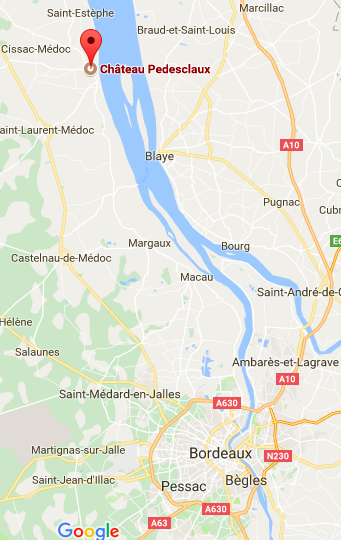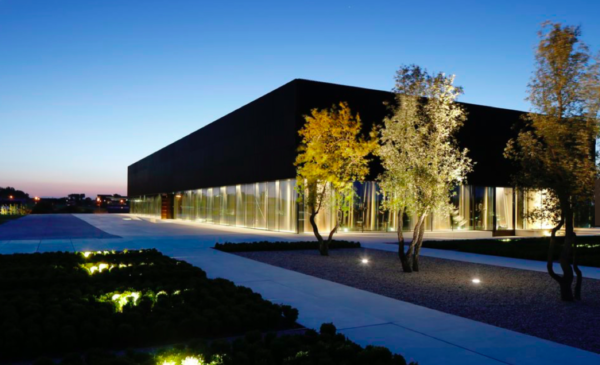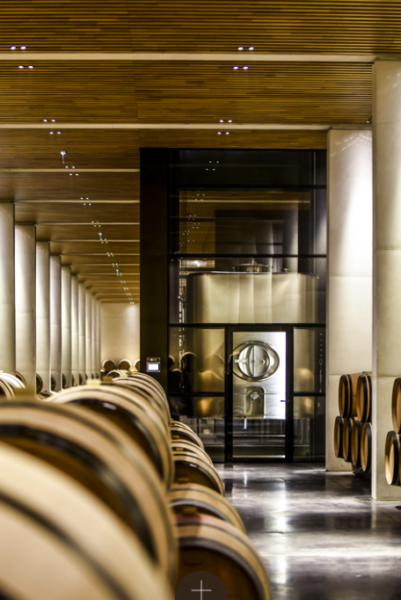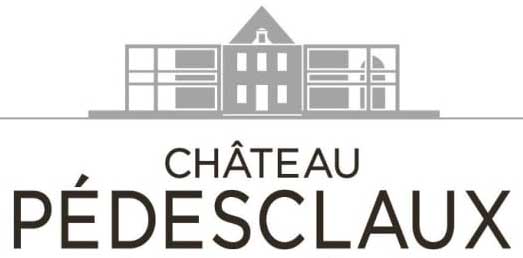Overview
Just 45 years after the estate was founded, Pédesclaux saw its name carved in the stone of the 1855 classification. The status of fifth growth (‘Cinquième Cru’) it was awarded represented much more than a mere heritage – it also imposed stringent requirements for the future.
History
The château was founded in 1810 by winebroker Pierre Urbain Pédesclaux, who operated it with his wife until 1891, when the estate was sold to the Count de Gastebois. In 1930, Lucien Jugla became tenant, and eventually purchased the Château in 1950. In 2009, the estate was purchased by Jacky Lorenzetti, who also owns Chateau Lilian Ladouys in Saint-Estèphe and 50% of Château d’Issan in Margaux. Lorenzetti enlarged the vineyards with the purchase of 12 hectares of Medoc vines that are situated next to parcels owned by Chateau Lafite Rothschild and Chateau Mouton Rothschild.
The Terroir
 The vines of Pédesclaux sit upon a geological masterpiece whose origins date back 40 million years. It is this unique terroir, the Médoc par excellence, which was recognised by the 1855 classification. The Médoc’s exceptional geology was truly revealed to all during the 17th and 18th centuries. Europe and the world discovered that this terroir had a gift for producing wines of incomparable finesse. The great chateaus began to emerge, and with them the first attempts at classification. The 1855 classification is the most famous. Commissioned by the Chamber of Commerce for the Exposition Universelle in Paris, it differentiates between 61 red wine crus, 18 of which are in the Pauillac alone. It was drawn up by traders on the basis of the sales prices recorded in their archives. 160 years later, the 1855 classification still inspires dreams, as do the terroirs recognised at the time.
The vines of Pédesclaux sit upon a geological masterpiece whose origins date back 40 million years. It is this unique terroir, the Médoc par excellence, which was recognised by the 1855 classification. The Médoc’s exceptional geology was truly revealed to all during the 17th and 18th centuries. Europe and the world discovered that this terroir had a gift for producing wines of incomparable finesse. The great chateaus began to emerge, and with them the first attempts at classification. The 1855 classification is the most famous. Commissioned by the Chamber of Commerce for the Exposition Universelle in Paris, it differentiates between 61 red wine crus, 18 of which are in the Pauillac alone. It was drawn up by traders on the basis of the sales prices recorded in their archives. 160 years later, the 1855 classification still inspires dreams, as do the terroirs recognised at the time.
Acreage: 46 Ha (44 in Pauillac and 2 in the Haut-Médoc)
Grape Varietals: 47% Cabernet Sauvignon, 48% Merlot, 3% Petit Verdot, 2% Cabernet franc.
Planting density: 8.333-10.000 vines/Ha
Annual production: 8.000 cases
Soil: gravelly with seams of clay and limestone found at a greater depth.

Vinification
The fruit is hand-picked into small 8kg crates, with an unusual approach to harvesting introduced in the 2011 when the central vines within a plot were picked before the more peripheral vines. Continuing with the 2011 vintage, the fruit was placed in cold storage for 24 hours to reduce and even out the temperature, before it was then sorted manually, destemmed, sorted again and then vinified in nineteen thermo-regulated stainless steel cuves. The vats are filled by gravity without crushing, a process introduced with the 2009 vintage to protect the integrity of the fruit and enhance the quality of the extracted tannins. Thereafter the wine undergoes a cold maceration below 3ºC, followed by eight weeks of maceration during and after fermentation. There is punching-down to submerge the cap, and also délestage. Returning to the 2011 vintage as a typical example, the wine spends 14-16 months in oak, 60% new and 40% 1-year, with 20% of the malolactic fermentation occurring in barrel, in a climate-controlled barrel cellar renovated in 1998.
Wines and Production
The grand vin is Château Pédesclaux, and there is also a second wine until recently named Sens de Pédesclaux but rechristened Fleur de Pédesclaux in the 2007 vintage, and the total production is in the order of 8,000 cases. There is also a 2.6-hectare parcel planted with 60% Merlot and 40% Cabernet Sauvignon which is entitled only to the Haut-Médoc appellation, and is thus bottled as such, previously under the name La Rose de Pédesclaux but in more recent vintages this is labelled, rather more informatively, as Haut-Médoc de Pédesclaux.

Château Pedesclaux Pauillac Grand Cru Classé
Overview: Like the very best wines of its appellation, Château Pédesclaux reflects its complex terroir. Pédesclaux embodies the density of Pauillac tempered by a unique sensuality. Complexity, depth, sensuality, freshness and tension.
Terroir: Garonne gravel on limestone bedrock
Vines: All work favorizing a good distribution and aeration of the grapes (disbudding, clipping, thinning out of leaves. Hand-picked sorting harvest according to the terroir, the vigorous zones and separation between stocks from the heart and the borders of our plots. Harvest in crates, followed by a manual sorting on clusters and then on berries.
Grape Varieties: 48% Merlot, 47% Cabernet Sauvignon, 3% Petit Verdot, 2% Cabernet Franc (percentages vary depending on the vintage)
Average Age of the Vines: 35 years old
Average Yield: 38 Hl/Ha
Vinification: Gravitary vatting without pressing. Prefermentary cold maceration. Long vatting period. Gravitary vinification without pump.
Aging: 60% of new barrels; 16 months in barrels
Tasting Notes: Like the very best wines of its appellation, Château Pédesclaux reflects its complex terroir. Pédesclaux embodies the density of Pauillac tempered by a unique sensuality. Complexity, depth, sensuality, freshness and tension.

Fleur de Pedesclaux
Overview: Pédesclaux’s second wine is a flower which opens up as you approach. The wine’s higher proportion of Merlot gives it a tender and gentle style with an ample, silky structure. Its fruit aromas are intense, crisp and delicious. Fleur de Pédesclaux can be drunk in its very early years.
Production Area: 46.7 ha
Plantation Density: 8,500 to 10,000 vine stocks / ha
Average Age of the Vines: 35 years old
Terroir: Garonne gravel on limestone bedrock
Grape Varieties: 48% Merlot, 47% Cabernet Sauvignon, 3% Petit Verdot, 2% Cabernet Franc (percentages vary depending on the vintage)
Vines: All work favorizing a good distribution and aeration of the grapes (disbudding, clipping, thinning out of leaves)
Harvest: Hand-picked sorting harvest according to the terroir, the vigorous zones and separation between stocks from the heart and the borders of our plots. Harvest in crates, followed by a manual sorting on clusters and then on berries.
Vinification: Gravitary vatting without crushing. Prefermentary cold maceration. Long vatting period. Gravitary racks and returns
Aging: 16 months (10% new wood)



